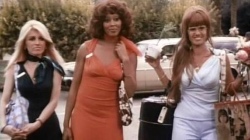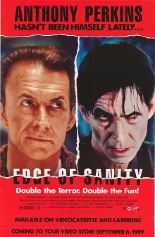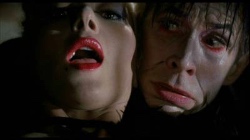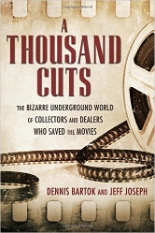 Now adults, the children of the 1980s clearly are nostalgic, judging from this past fall’s glut of books on that era’s teen movie. Hadley Freeman’s Life Moves Pretty Fast came first, followed closely by Kevin Smokler’s travel-leaning Brat Pack America. Now, journalist Jason Diamond joins the fray with Searching for John Hughes: Or Everything I Thought I Needed to Know About Life I Learned from Watching ’80s Movies, but stands out as unique because it’s a memoir. Hoo-boy, is it ever. As a Chicagoan, Diamond felt a particular kinship to Hughes’ movies — Sixteen Candles; Ferris Bueller’s Day Off; Planes, Trains & Automobiles; Home Alone, et al. — which tended to take place there, albeit in the fictional suburbia of Shermer, so the miserable barista longing to be a professional writer embarked on a biography of the iconic filmmaker. Instead, as we witness, the project morphed into this memoir of the author’s own terrible childhood and arguably even worse teenage years, during which Hughes’ CV offered a recurring temporary escape. The end result is raw, real, gut-wrenching and, like Hughes’ work, worthy of resonating with an entire generation. Oh, if only they read more than 140 characters!
Now adults, the children of the 1980s clearly are nostalgic, judging from this past fall’s glut of books on that era’s teen movie. Hadley Freeman’s Life Moves Pretty Fast came first, followed closely by Kevin Smokler’s travel-leaning Brat Pack America. Now, journalist Jason Diamond joins the fray with Searching for John Hughes: Or Everything I Thought I Needed to Know About Life I Learned from Watching ’80s Movies, but stands out as unique because it’s a memoir. Hoo-boy, is it ever. As a Chicagoan, Diamond felt a particular kinship to Hughes’ movies — Sixteen Candles; Ferris Bueller’s Day Off; Planes, Trains & Automobiles; Home Alone, et al. — which tended to take place there, albeit in the fictional suburbia of Shermer, so the miserable barista longing to be a professional writer embarked on a biography of the iconic filmmaker. Instead, as we witness, the project morphed into this memoir of the author’s own terrible childhood and arguably even worse teenage years, during which Hughes’ CV offered a recurring temporary escape. The end result is raw, real, gut-wrenching and, like Hughes’ work, worthy of resonating with an entire generation. Oh, if only they read more than 140 characters!
With Applause’s paperback release of 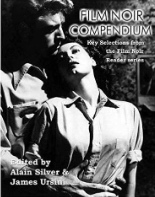 Film Noir Compendium: Key Selections from the Film Noir Reader Series, newcomers to the dynamic duo of cinematic historians Alain Silver and James Ursini can get a taste of the goods without having to wonder which prior volume to purchase or whether to buy them all. (You may find yourself doing the latter if you enjoy this lovingly oversized presentation, overflowing with hundreds of stills.) Compendium culls some 30 articles from 20 years worth of contents — all with an academic bent, but not to a point of inaccessibility. Standouts include Ursini’s visual breakdown of the Mike Hammer classic Kiss Me Deadly; Todd Ericsson’s 1990 examination of noir’s then-resurrection as a genre (e.g., Dennis Hopper’s The Hot Spot, Michael Mann’s Thief and William Friedkin’s To Live and Die in L.A.); and Paul Schrader’s well-informed “notes on film noir,” which is the equivalent of a master class — no surprise to readers of the Taxi Driver scribe’s Film Comment pieces, past or present. The book’s layout could stand a sharper design, but the words are what really matter here — especially when you have Stephen Farber putting “the bitch goddess” under a microscope.
Film Noir Compendium: Key Selections from the Film Noir Reader Series, newcomers to the dynamic duo of cinematic historians Alain Silver and James Ursini can get a taste of the goods without having to wonder which prior volume to purchase or whether to buy them all. (You may find yourself doing the latter if you enjoy this lovingly oversized presentation, overflowing with hundreds of stills.) Compendium culls some 30 articles from 20 years worth of contents — all with an academic bent, but not to a point of inaccessibility. Standouts include Ursini’s visual breakdown of the Mike Hammer classic Kiss Me Deadly; Todd Ericsson’s 1990 examination of noir’s then-resurrection as a genre (e.g., Dennis Hopper’s The Hot Spot, Michael Mann’s Thief and William Friedkin’s To Live and Die in L.A.); and Paul Schrader’s well-informed “notes on film noir,” which is the equivalent of a master class — no surprise to readers of the Taxi Driver scribe’s Film Comment pieces, past or present. The book’s layout could stand a sharper design, but the words are what really matter here — especially when you have Stephen Farber putting “the bitch goddess” under a microscope.
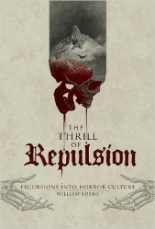 Which horror films feature the most of Mr. Mephistopheles? Which horror soundtracks are the scariest? Who draws horror comics best? The answers to these and many other superlative-determining questions await in The Thrill of Repulsion: Excursions into Horror Culture. For the Schiffer-pubbed hardcover, Horror News Network contributor William Burns presents nearly two dozen essays on terror-related topics primarily concerning movies, but also not ignoring TV, music and books (comics included). Nearly all of the chapters are presented in the ever-popular list format, each cleverly and consistently going to 13, rather than the standard, ho-hum 10. I was unfamiliar with Burns’ name or work, so I don’t know how much critical credibility he brings to the project, but he obviously is well-versed in cinema that goes bump in the night. I especially enjoyed his countdown of horror films “That Deserve Better,” because his selections prove him right, from The Boy Who Cried Werewolf to the top-slotted The Spider Labyrinth. —Rod Lott
Which horror films feature the most of Mr. Mephistopheles? Which horror soundtracks are the scariest? Who draws horror comics best? The answers to these and many other superlative-determining questions await in The Thrill of Repulsion: Excursions into Horror Culture. For the Schiffer-pubbed hardcover, Horror News Network contributor William Burns presents nearly two dozen essays on terror-related topics primarily concerning movies, but also not ignoring TV, music and books (comics included). Nearly all of the chapters are presented in the ever-popular list format, each cleverly and consistently going to 13, rather than the standard, ho-hum 10. I was unfamiliar with Burns’ name or work, so I don’t know how much critical credibility he brings to the project, but he obviously is well-versed in cinema that goes bump in the night. I especially enjoyed his countdown of horror films “That Deserve Better,” because his selections prove him right, from The Boy Who Cried Werewolf to the top-slotted The Spider Labyrinth. —Rod Lott

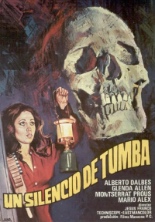
 No tombs exist in Jess Franco’s
No tombs exist in Jess Franco’s 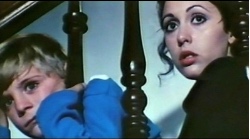 Collective weekend plans of fun in the sun (and sack) go awry when the child disappears from his bedroom, with a ransom note demanding 2 million pesos left in his place. Given the heavy privacy of and limited access to the island, the culprit must be among the 10 or so people sleeping under Annette’s roof — perhaps even Annette herself. But who? And why?
Collective weekend plans of fun in the sun (and sack) go awry when the child disappears from his bedroom, with a ransom note demanding 2 million pesos left in his place. Given the heavy privacy of and limited access to the island, the culprit must be among the 10 or so people sleeping under Annette’s roof — perhaps even Annette herself. But who? And why?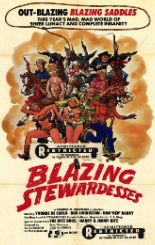
 Al Adamson only made
Al Adamson only made 